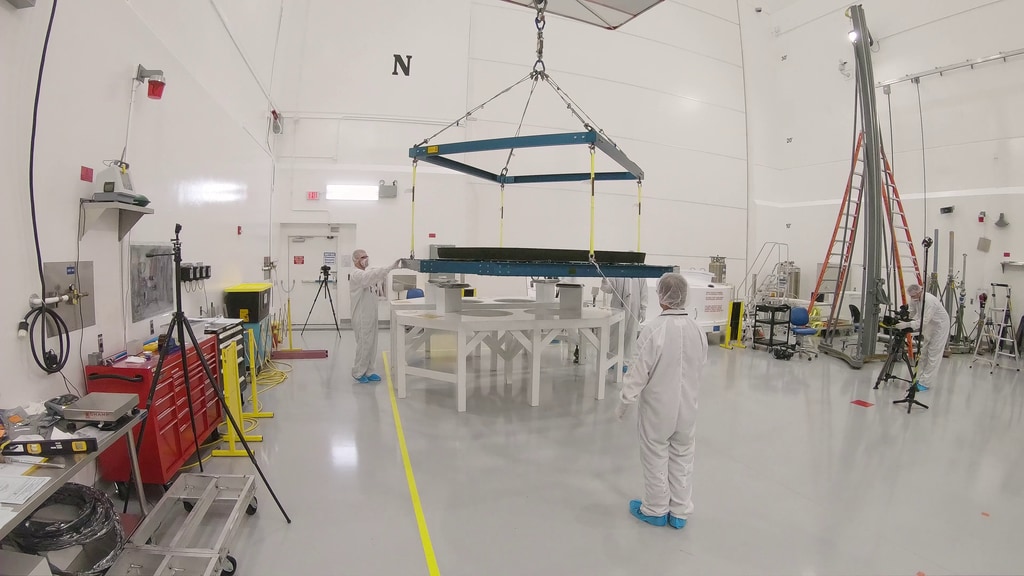Power Up: Solar Arrays Installed on NASA’s Mission to Touch the Sun
NASA’s Parker Solar Probe depends on the Sun, not just as an object of scientific investigation, but also for the power that drives its instruments and systems. On Thursday, May 31, 2018, the spacecraft’s solar arrays were installed and tested. These arrays will power all of the spacecraft’s systems, including the suites of scientific instruments studying the solar wind and the Sun’s corona as well as the Solar Array Cooling System (SACS) that will protect the arrays from the extreme heat at the Sun.
“Unlike solar-powered missions that operate far from the Sun and are focused only on generating power from it, we need to manage the power generated along with the substantial heat that comes from being so close to the Sun,” said Andy Driesman, project manager from the Johns Hopkins Applied Physics Laboratory in Laurel, Maryland. “When we’re out around the orbit of Venus, we fully extend the arrays to get the power we need. But when we’re near the Sun, we tuck the arrays back until only a small wing is exposed, and that portion is enough to provide needed electrical power.”
The solar arrays are cooled by a gallon of water that circulates through tubes in the arrays and into large radiators at the top of the spacecraft. They are just over three and a half feet (1.12 meters) long and nearly two and a half feet (0.69 meters) wide. Mounted on motorized arms, the arrays will retract almost all of their surface behind the Thermal Protection System – the heat shield – when the spacecraft is close to the Sun. The solar array installation marks some of the final preparation and testing of Parker Solar Probe leading up to the mission’s July 31 launch date.

Members of the Parker Solar Probe team examine and align one of the spacecraft’s two solar arrays on May 31, 2018.
Credit: NASA/Johns Hopkins APL/Ed Whitman

A member of the Parker Solar Probe team examines one of the spacecraft’s two solar arrays on May 31, 2018.
Credit: NASA/Johns Hopkins APL/Ed Whitman

Parker Solar Probe’s two solar arrays – one of which is shown here on the spacecraft – were installed on the spacecraft on May 31, 2018.
Credit: NASA/Johns Hopkins APL/Ed Whitman

After installation of the solar arrays on May 31, 2018, Parker Solar Probe team members use a laser to illuminate the solar cells and verify that they can create electricity and transfer it to the spacecraft.
Credit: NASA/Johns Hopkins APL/Ed Whitman
Credits
Please give credit for this item to:
NASA's Goddard Space Flight Center
-
Photographer
- Ed Whitman (Johns Hopkins University/APL)
Release date
This page was originally published on Wednesday, June 6, 2018.
This page was last updated on Wednesday, May 3, 2023 at 1:46 PM EDT.
